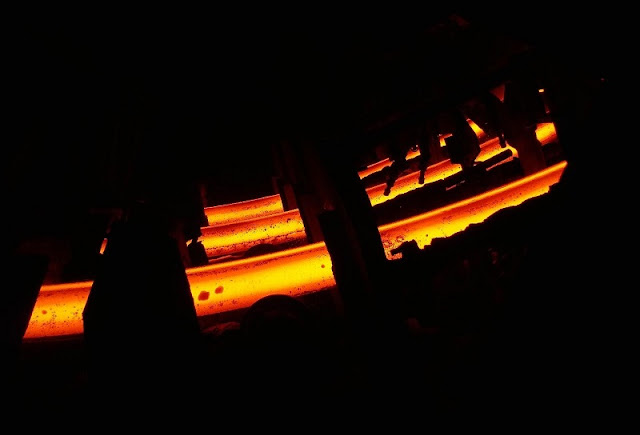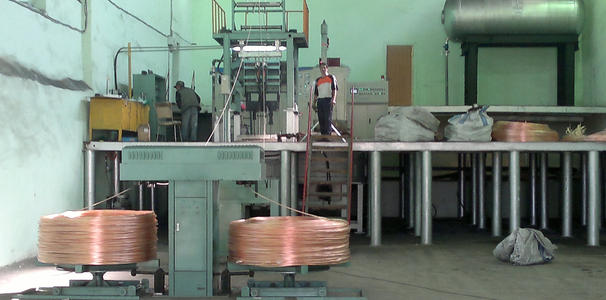The Development History of Steel Continuous Casting Technology
The Development History of Steel Continuous Casting Technology
Continuous casting of non-ferrous metals (copper, aluminum, etc.) was successful in the 1930s. By the 1940s, S.Junghans in Germany and I.Rossi in the United States achieved industrial-scale continuous casting of steel. success. By the 1950s, the molten steel continuous casting process was relatively mature. Due to the deepened understanding of the metallurgical theory of continuous casting process, and the continuous improvement of equipment structure and production process of continuous casting machine, the operation safety and the quality of casting billet are basically guaranteed.
The equipment type of the steel continuous casting machine started from the semi-continuous vertical type, and the vertical bending continuous type gradually reduced the height of the equipment. In the 1960s, it became a common arc-type continuous casting machine. In 1981, 415 continuous casting machines were installed in 51 countries in the world, with an annual output of 135 million tons of steel, accounting for 20% of the steel output of that year; the number of slab machines was about 1/4, accounting for 50% of the steel continuous casting slab output;
Trends in the development of major world steel production and steel continuous casting billet production
The production of steel continuous casting slabs in steel-producing countries accounts for about 38% of steel production. Trends in the development of world steel production and continuous casting slab production.
In the 1980s, many electric furnace workshops achieved full continuous casting in industrialized countries, and there is also fully continuous casting in new large converter workshops. The cast steel grades were mostly ordinary carbon steel before 1970.
At present, except for a few high-carbon, high-alloy steels and steels that are prone to cracks, such as lead-containing free-cutting steels, high-speed tool steels, and some bearing steels and valve steels, there are still difficulties in continuous casting. About 85% of the steels are can be continuously cast.
In the 1970s, electromagnetic stirring was adopted to improve the quality of continuous casting billets. The steel types produced by continuous casting include deep-drawn sheet steel, high-strength medium and heavy plate steel, rail steel, spring steel, wire steel, stainless acid-resistant steel, etc. Especially stainless acid-resistant steel, more than 50% of which is produced by continuous casting in the world. The maximum size of the slab produced is 2640 mm wide and 350 mm thick; the maximum square billet is 560 × 400 mm, and the minimum is 50 × 50 mm, which is often controlled above 100 × 100 mm in actual production; the maximum round billet is φ450 mm and the minimum is φ40mm.
In large-scale continuous casting units, in order to quickly adjust the production requirements of the slab section, the unit components are usually replaced as a whole; the dummy bar is fed from the upper mouth of the mold, which can reduce the auxiliary operation time of feeding the dummy bar from the lower mouth; In some slab casting machines, the mold is made into six sections, which can be exchanged and changed independently. When changing the section, you only need to stop pouring molten steel for 20 seconds, and you can continue to produce other new section products. Some slab machines produce wide slabs of a single size and then slit them into narrow slabs of the desired width. In order to increase the variety and increase the output of one continuous casting machine, a multi-strand continuous casting machine was developed. Some slab machines use 2 to 3 flow units, and the billet machine can have as many as 8 to 10 flows.
In recent years, steel continuous casting production automation technology has developed rapidly. Steel mills with advanced technology have begun to realize full automatic computer control of molten steel composition, temperature, mold level, casting speed, secondary water cooling, a thermal inspection of billet quality, and cut-to-length; When the quality of the cast slab is not up to standard, it will be automatically cut off; then it will be produced by hot conveying and continuous rolling. China began to conduct industrial trials of semi-continuous casting in the 1950s.
Between 1959 and 1960, a vertical slab continuous caster was built. In the mid-1960s, a curved slab continuous casting machine was built. At the same time, there is also a vertical and curved billet continuous casting machine.
As of 1981, there were 26 continuous casting machines in operation in China, and in 1981, 2.54 million tons of continuous casting billets were produced, accounting for 7.65% of the national steel output. Casting steels include ordinary carbon steel, low alloy structural steel, spring steel, electrical steel, etc. The varieties of continuous casting billets are 120-200 mm square billets and 700-2300 mm wide slabs.
Hani is the one-stop supplier able to design, manufacture, install and commission your melt shop and hot rolling mill plant from A to Z.
Get Casting Machine Price, Free send inquiries to stella@hanrm.com or inquiry99@hanmetallurgy.com if any needs.
Whatsapp/Wechat:+8615877652925
Website: https://www.hanmetallurgy.com/



评论
发表评论